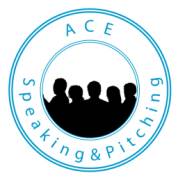It can be awkward to deliver your elevator pitch and the best way to make it smoother could be learning how to twist it into an audience focused, persuasive conversation.
If you have ever heard someone, give an ‘Elevator Speech’ off the cuff at an event, you might have wanted to press the emergency stop button or dive in to save them because if it is not delivered well it can be cringe worthy.
Many elevator pitches are excessively long, technical, self-focused and boring, and often people are dutifully listening so they get the opportunity to share their elevator pitch with you. Rather than making a positive first impression on strangers, some pitchers irritate and turn people off and that is why you may struggle with the concept of an elevator pitch.
But when you are attending events, often people will inquire, “What do you do?” (Which is a naff question – you can do better!) To respond to that question in a way that is effective, efficient, and engaging, an elevator pitch is a must, but not in the way that you may be thinking.
You should conduct research before writing an elevator pitch with a thorough understanding of what you’re selling, as well as who you are and what you have to offer, but mostly to whom.
1.Finish by introducing yourself to others
End by introducing yourself as that leaves the audience with your name as the last thing they will remember.
2.Demonstrate expertise on the products and services you sell matched with needs and wants
Your expertise is one thing that will set you apart from competitors, but it must match what the audience wants or needs. Study your audience and language, identify what to focus on out of your products and services that might best fit and could show a point of difference.
3.Know your audience
Understanding the problems your products and services solve and the pain points of your audience, going to where they are and putting yourself in their shoes is key. Addressing objections that could be open or hidden, comes from knowing your audience.
4.Highlight the key points
Most businesses have a lot of components, but an elevator pitch doesn’t have time to convey a long story. Instead, to engage your audience, focus on demonstrating value first, not your products, services and experiences.
The following areas should be addressed in your elevator pitch:
- Your audience
- Pains
- Gains
- Solution
- A call to action
- Your name and business

